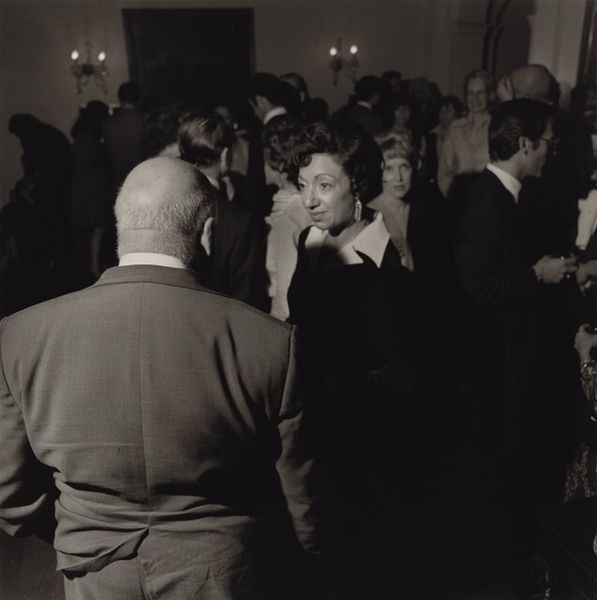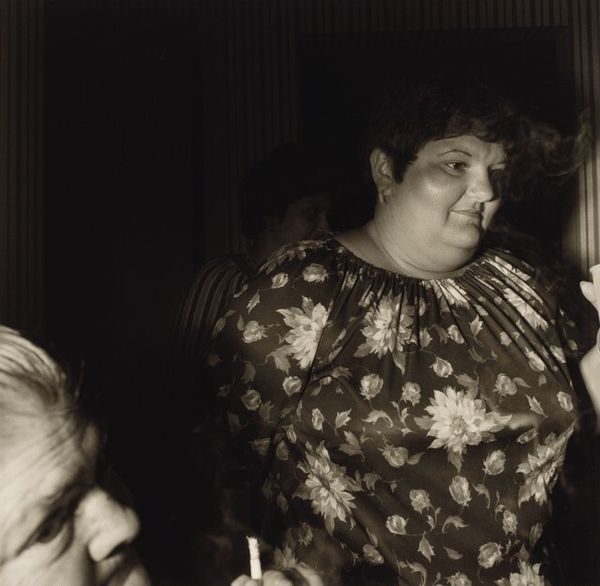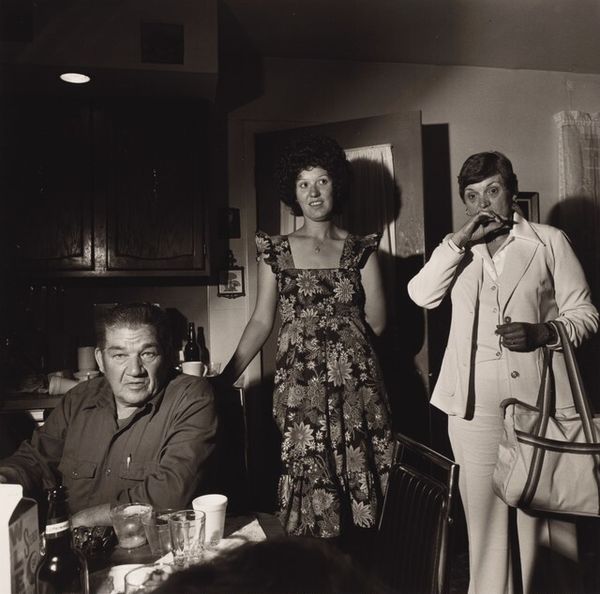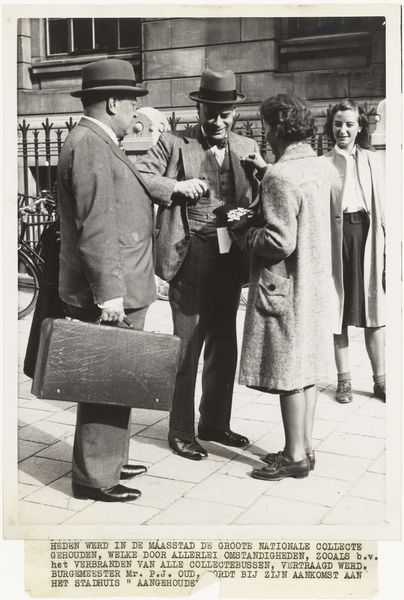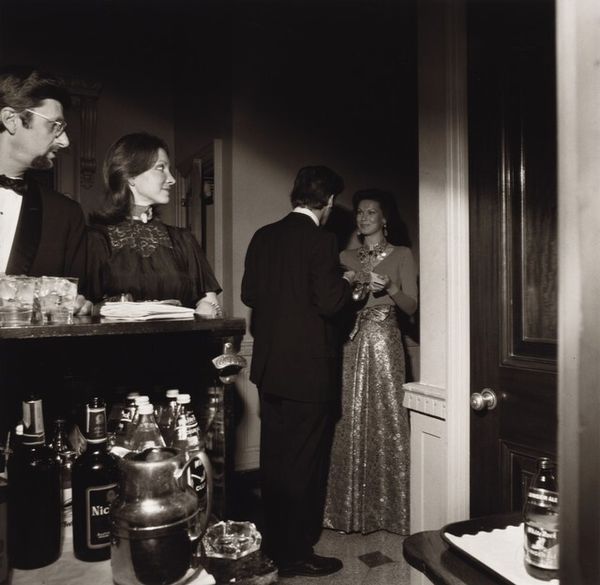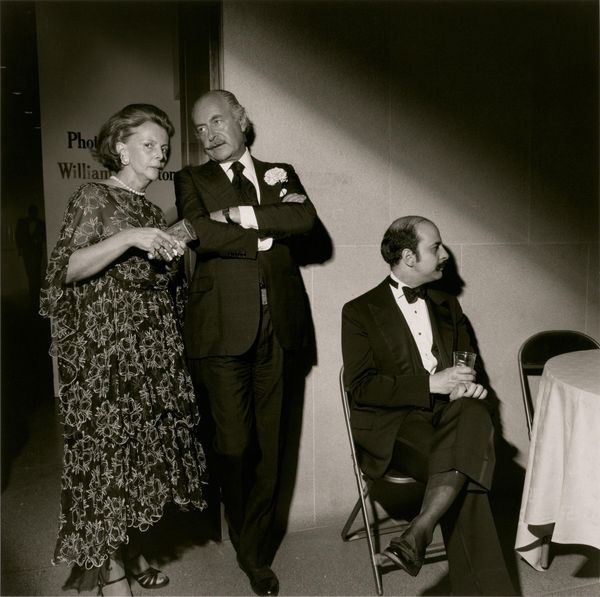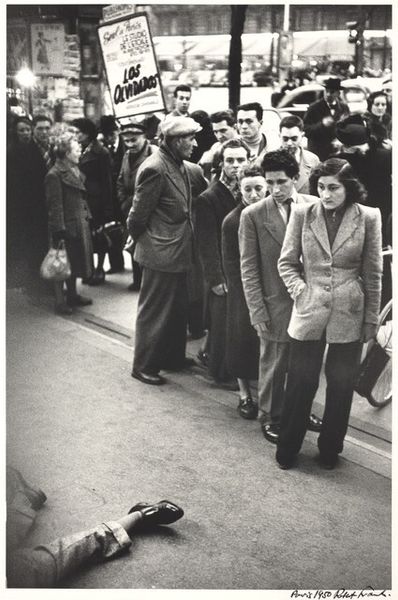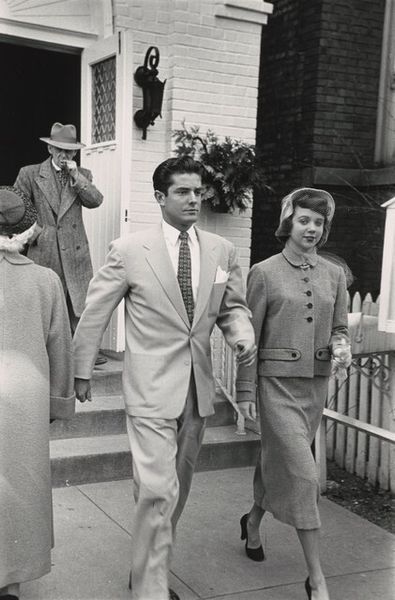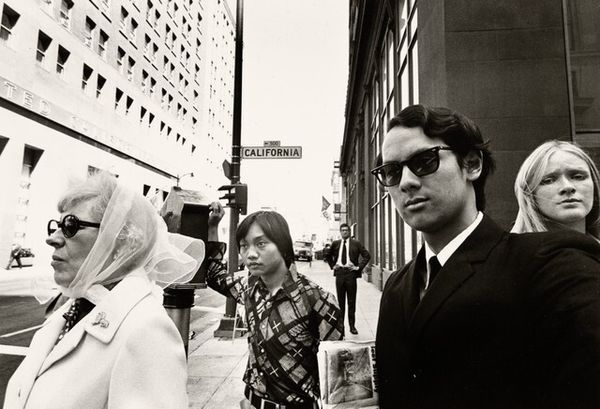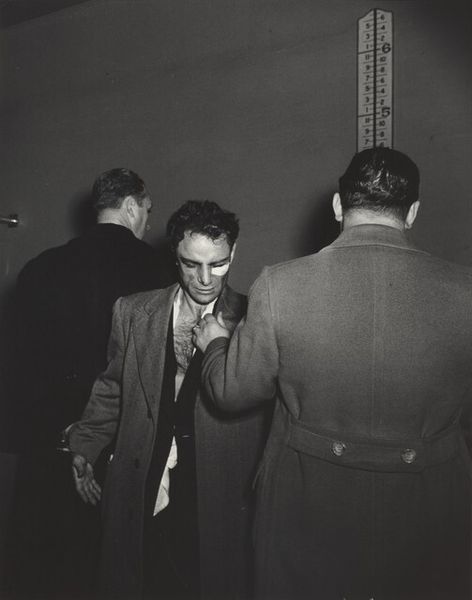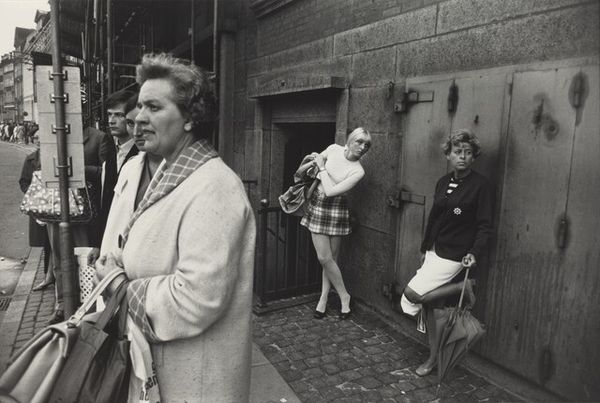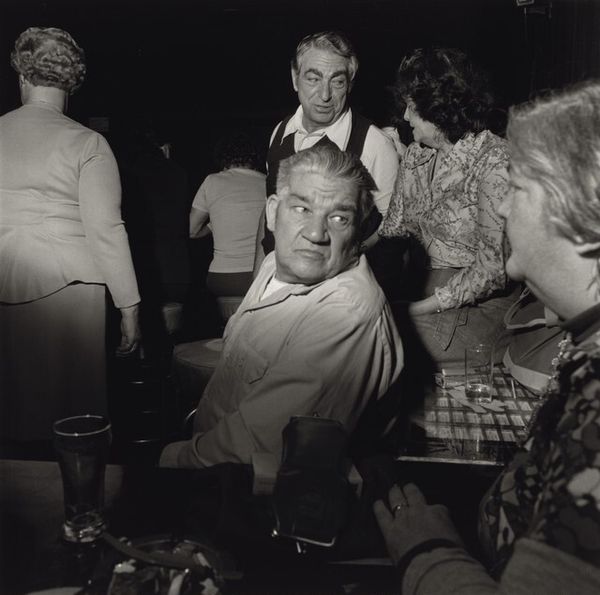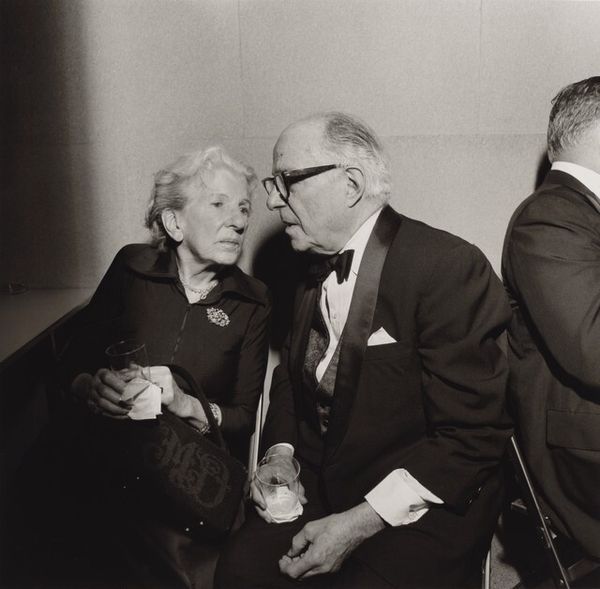
photography
#
portrait
#
street-photography
#
photography
#
black and white
#
monochrome photography
#
cityscape
#
monochrome
#
monochrome
Dimensions: overall (sheet, trimmed to image): 16.2 x 16.2 cm (6 3/8 x 6 3/8 in.) mount: 33.02 x 29.21 cm (13 x 11 1/2 in.) mat: 45.72 x 35.56 cm (18 x 14 in.)
Copyright: National Gallery of Art: CC0 1.0
Curator: Harry Callahan's photograph "Providence," dating circa 1965, captures a seemingly candid moment in an urban setting. Editor: There’s a sharp, almost austere feeling. Stark shadows carve out the figures. What’s the material makeup, do we know what kind of film stock Callahan used? It’s crucial to the high contrast. Curator: Callahan was known for experimenting, so pinning it down is tricky. What strikes me is the emotional weight each figure carries, amplified by their expressions. The woman in the patterned coat especially seems laden with…something. Editor: It’s a textile landscape, isn’t it? The hard, defined edges everywhere--architecture of the everyday. That textured coat is screaming "1960s synthetic blend", mass produced yet offering a sense of individualized style within a certain class bracket. It's about constructed identities. Curator: Identities presented, definitely, but also identities revealed. Consider the doorframe looming, an architectural suggestion of threshold. Could this signify moments of personal transformation as we transit spaces, both physically and psychologically? The gaze from each figure has such an outward facing direction with what feels like interior depth. Editor: Possibly. Or simply that the setting, the city as a locus of consumption and production, dictates their roles. The image has very gendered overtones that are enhanced by those clothes. Think about how readily accessible fashion trends were becoming with new industrial techniques, influencing behavior, too. It suggests how the machine impacts individual style, ultimately constructing us all into units of labour and capital. Curator: An intriguing interpretation, certainly. It highlights the tension between the individual and the collective, manifested through external markers. For me, I'm held by the image of self each figure gives so intently. Editor: Ultimately, Callahan has left behind compelling evidence about our lives under post-war industry. What did it mean to be "modern," as recorded materially? Food for thought.
Comments
No comments
Be the first to comment and join the conversation on the ultimate creative platform.
